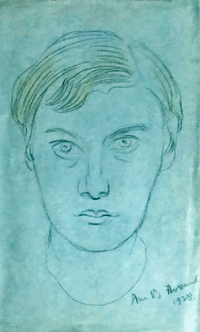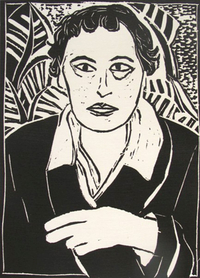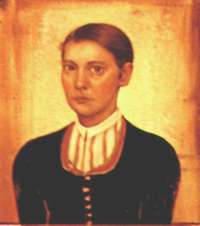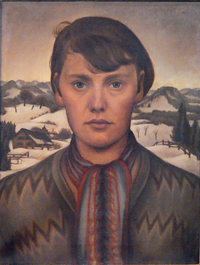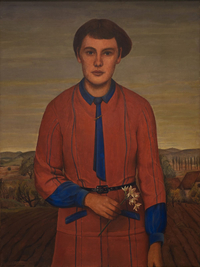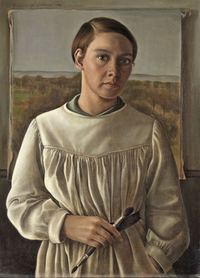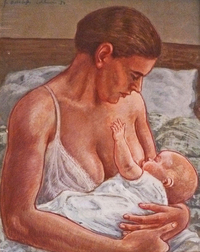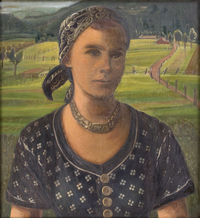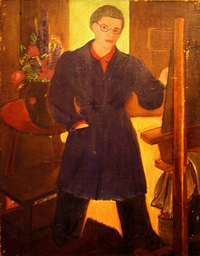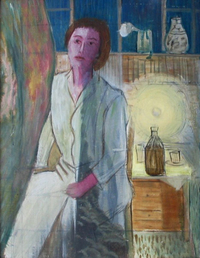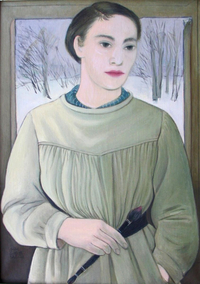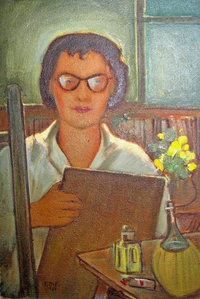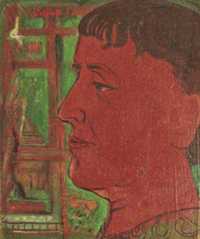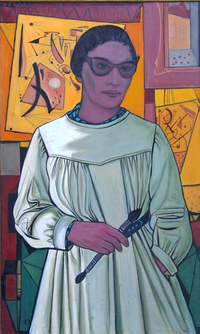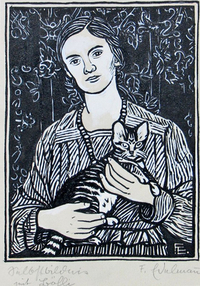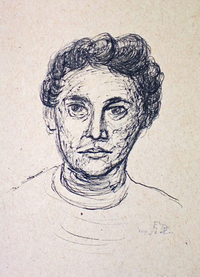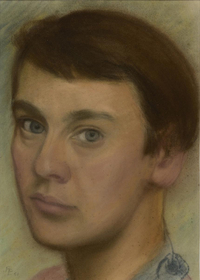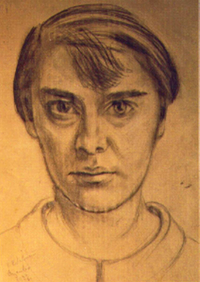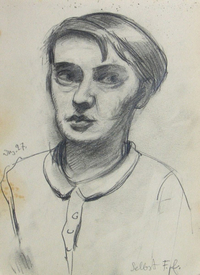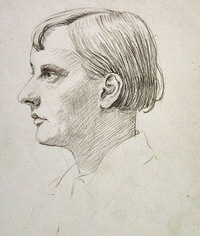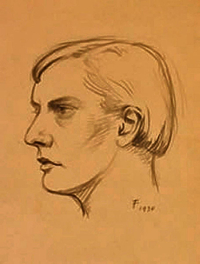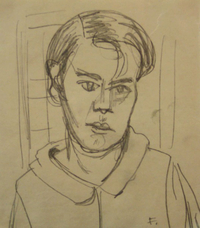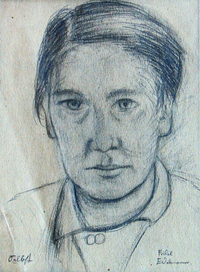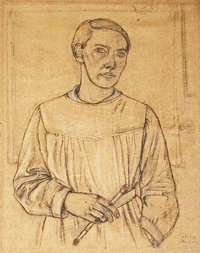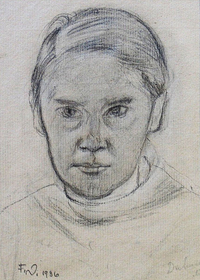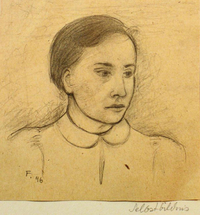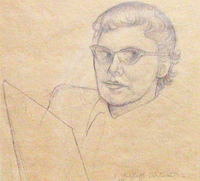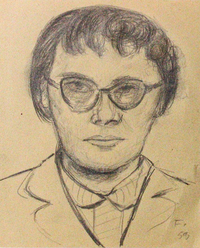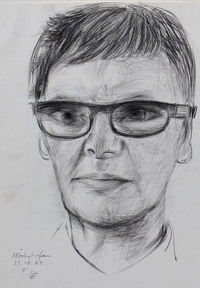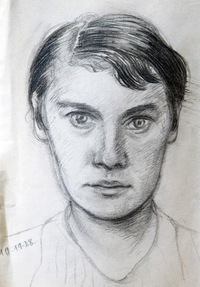- Home
- Works in Exhibitions
- Fridel Dethleffs-Edelmann
- Ursula Dethleffs
- Treasures from the Collection
- Collection of art
- Watercolor
- Tapestry
- Collage
- Gouache
- Reverse glass painting
- Glass church window
- Glass Mosaic
- Ceramic Plate
- Ceramic Picture
- Ceramic Relief
- Ceramic Sculpture
- Mixed media
- Object Art Relief
- Object Art Sculpture
- Oil Paintings
- Repro Lithography
- Repro Glass Lithography
- Repro Woodcut
- Repro Linocut
- Repro Monotype Printing
- Repro Etching
- Tempera
- Drawing Brush
- Drawing Brush Repro
- Drawing Ink and Pen
- Drawing Crayon
- Drawing pencil and crayon
- Exhibition by Period
- FDE: Selfportraits
- Introduction to the work of Ursula Dethleffs
- The collage as a total artwork
- Biography
- Dethleffs Gallery
einzigartig
Fridel Dethleffs-Edelmann
Ursula Dethleffs
Fridel Dethleffs-Edelmann
Ursula Dethleffs


Fridel Dethleffs-Edelmann:
Artist over two world wars
with famine in 1918, with inflation until 1923, through the 3rd Reich until 1945, then the economic boom and later her brain tumor.
Self-portraits bring us closer to the personality - here the artist Fridel Dethleffs-Edelmann. Her self-portraits also allow conclusions about her artistic work, with self-portraits by Fridel Dethleffs-Edelmann being only a small part of her many works.
It becomes clear at first how hard her life was often - in her drawings and sketches:
Since she had to cope with most of her life (1899-1982) with two world wars and their consequences, that's no wonder. Fortunately, her parents (innkeepers, distillers of alcohol) protected Fridel and her brother with the greatest love from the worst. Arist and Fridel got married in 1931 - it was a happy time until 1939: Arist developed the Wohnauto, a residential car dreamed of by Fridel in 1924, for painting in the outdoors. Her daughter Ursula was born healthy in 1933. In addition to the Dethleffs sporting goods factory, the small caravan plant was founded. In World War II Arist was drafted in 1940 as a soldier. He came back unwounded. Under his leadership, the caravan plant grew. Ursula was - under the care of her mother - celebrated for her artwork as a child prodigy. The family was economically successful - almost everything was good. Until Fridel fell ill with a brain tumor; she was operated on but the consequences hindered her work greatly. Arist went completely blind. The factory was sold.
All this is hidden in her drawings and sketches.
In her self-portraits, painted in oil, a motif appears again and again: the artist at work.
In 1932, the subject appears for the first time at the "Self-Portrait in the Malkutte". It was awarded the First State Prize in the exhibition "The Woman in the Picture" by the Badischer Kunstverein Karlsruhe. The HOUSE OF ART in Munich has acquired the painting. (The picture was often exhibited - most recently in New York and Bilbao by the Museum Guggenheim.) The artist stands in the white-gray paintbrush thoughtfully with the brush in her hands in the wild.
In 1942 she painted herself In the studio - she is the center of attention in the studio - as well as in the family. The bright sunlight falls from behind on her and on her dark brown painters smock. The large bouquet of flowers is behind her on a side table. Her easel is only visible from the side.
1950 also in the studio. It's dark outside the studio windows. Behind her is a glowing table lamp. The artist stands tall, a little to the left of the middle - she wears the bright paintbrush again, but her right side is shaded. She painted herself as transparent as she did next to the curtain. It is there, but it does not dominate. Again, the easel plays no role.
In 1952 she recalls the award-winning painting from 1932 with the new painting. She stands again with a paintbrush and brush in front of the landscape - but this time in winter. The distance to the background is low. The face is almost striking, plain. The new objectivity is detached from the stereotypical of modernity.
Also in 1952, the self-portrait was created in the studio. Behind her the studio window, under her bookshelf. A yellow bouquet with zucchini is placed under the studio window. The artist has taken the picture of the easel. She holds it in the hand. In front of her on the table an empty Chianti bottle from Italy; symbolic of her own emptiness. The artist alienated the woman in the picture so much that she is hardly recognizable anymore.
Her last known self-portrait in oil on canvas dates back to 1955: she is standing in the studio in a white painter's coat with two paintbrushes in her hand. She is in thought and looks past the viewer. Its white artist's hat is illuminated to a third, two-thirds are shaded. Her head, however, is completely in the shade. Behind her are pictures in the studio with modern graphic figures.
Surprising are the bright oil colors of three paintings from the years 1924, 1942 and 1955
1924: Fridel Dethleffs-Edelmann painted himself as a frightened young woman at the age of 25. She was sitting in a chair. She held her head straight, he was slightly turned to the left. Her dark blond hair was neatly combed. With big, almost fearful eyes she looked at the other person. Her white blouse had a narrow, pointed collar and red, longitudinal stripes. Her traditional jacket was black; the collar was edged in red. The many small buttons were red-gold colored. The biggest contradiction is that Fridel had set the young woman with the golden head in front of the all-overshining red and gold background. Despite her fear, she is a child of happiness.
1942: In addition to the image description above is important here: The yellow-golden luminosity of the painting. At the age of 43, the artist sees herself at the zenith of her life. She is sure of her importance. The yellow-golden sunlight from the window falls to the ground. It has only the task to put her personality in the full light with the brown artist's hat. Your face and hands also benefit from the yellow luminosity. Even the beloved easel with picture seems to have become secondary.
1955: The artist is 56 years old. She has been hard-pressed in her life. She had to survive the hunger years. She had to fight for a place at the Landeskunstschule as a woman. Her artworks were recognized before the Nazis came to power; now she was to renounce the art she had worked hard for. Her family expected that because they were worried about the factory or the employees. When peace finally came in 1945, other artists accused her of adapting for the sake of money. All the artist has worked through in this picture: The gold-yellow still plays a role, but not for Fridel Dethleffs-Edelmann. Her face is now sinking in the shadows. Others make money with their modern pictures in the background. She now remembers the time when she did not have to fight for recognition.
June 2019 Bernd Riedle
